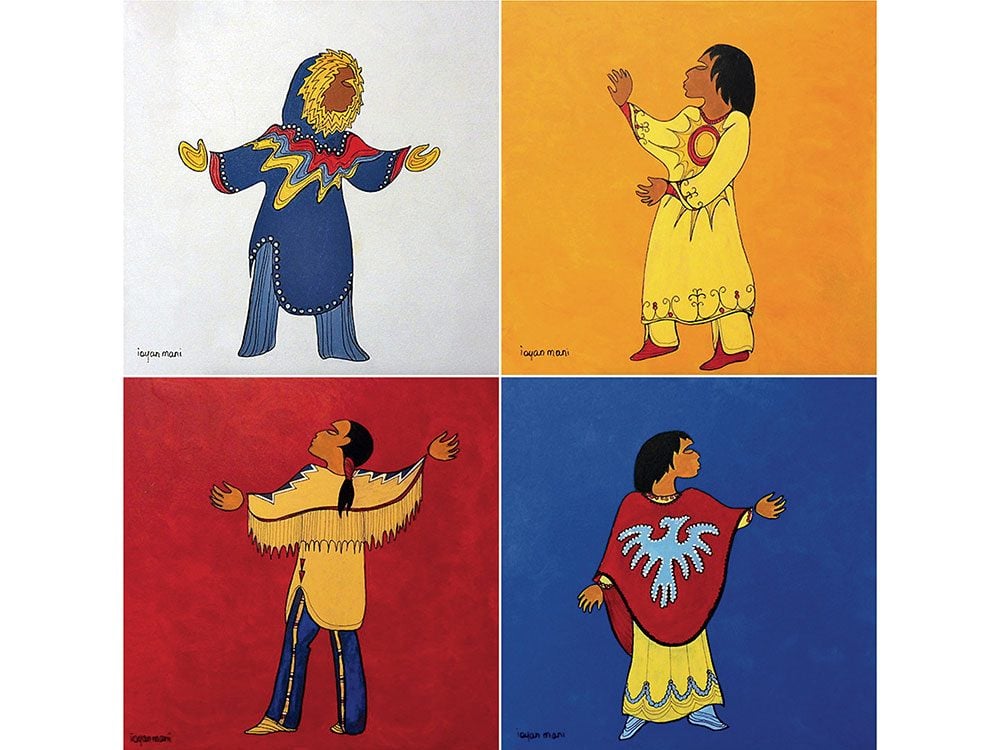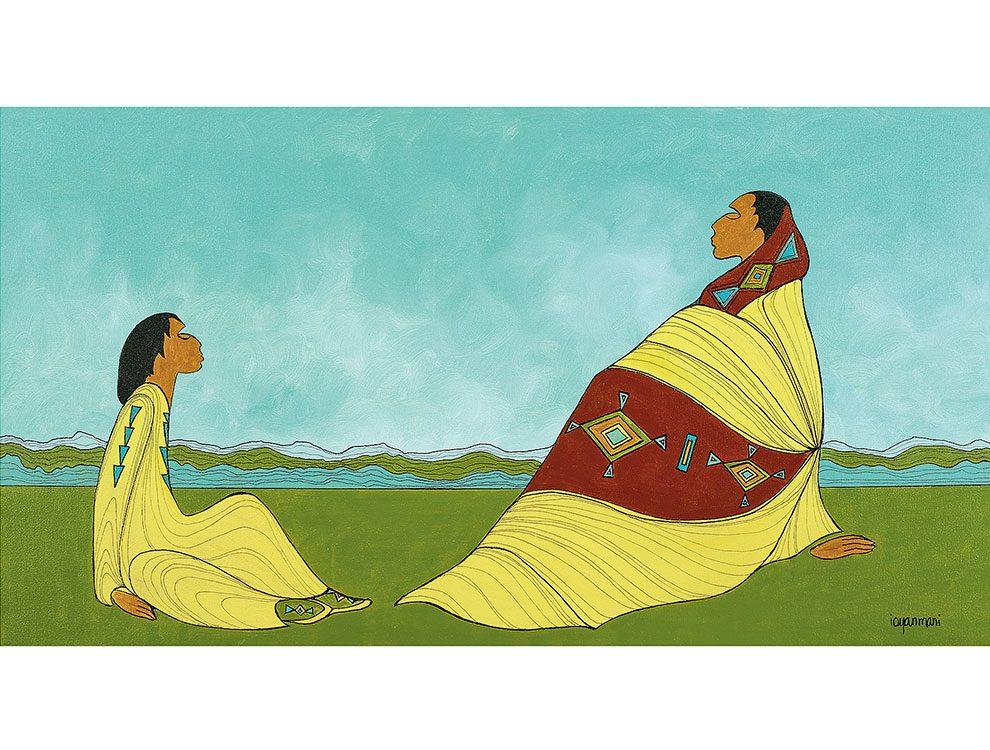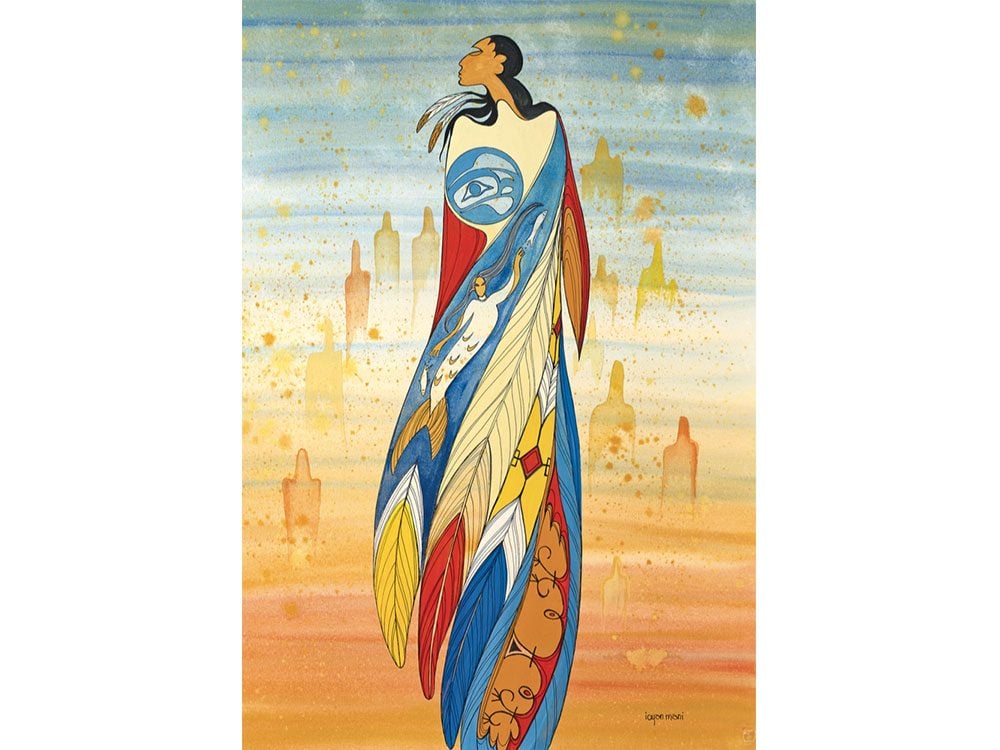
The World of Maxine Noel
I was born in Manitoba of Santee Oglala Sioux parents. I spent my early childhood on my mother’s reserve, but at the age of six was forced to attend an Indian residential school. I continue to be active in presenting this terrible history to students throughout Canada.
In 1964, I moved to Ontario where I settled into a career as a legal secretary. I was encouraged by those I worked with to consider taking up law myself. They saw my passion and that I cared about the values of justice and fairness, but after several years in that setting, I realized that the legal system was still a broken thing, in particular in the way it addresses my people’s needs and values. Had I stayed in that setting, I knew it would end up making me bitter and angry, which is not what I knew we needed to make the changes my people, and all of the communities we live in, need.
During my time with lawyers, I was asked to run the Ininew Native Friendship Centre in Cochrane, Ont. While the Ininew Friendship Centre had been established to provide a safe place for First Nations peoples, I quickly realized that it had become a crisis intervention centre, but without the tools needed to address those crises. Working with the Cree of Northern Ontario, I began to see a direction in my life towards community engagement and healing.
It was art, however, that would bring that direction into focus.
Meet the woman working with First Nations Elders to preserve Canada’s plants.

Heart to Spirit to Hand
Since I was a child, I have drawn from my imagination and from the world. Like breathing itself, perhaps, I would cover whatever spare paper I could find with images and visual stories. Heart to spirit to hand, this just came naturally to me. The drawings were how I would see the world around me, a way of speaking to that world, and slowly over subsequent years, a way of speaking about it.
A chance encounter with writer Tomson Highway, while working in Cochrane—where he admired some of my paintings that I hung on my office wall—brought me back to Toronto, where I took on a position with the Ontario Native Council On Justice, addressing the needs of First Nations inmates in and out of Ontario prisons and jails. The work, after being specifically approved for the position by the Native Sons group at the Guelph Correctional Centre (formerly known as the Ontario Reformatory), involved doing research and interviewing First Nations inmates and former inmates throughout Ontario, in detention centres and prisons, in district jails, community resource centres, and even at a logging camp out in the bush. The project was part of what is still an ongoing process of addressing the destructive relationship between First Nations communities and the criminal justice system.
This work began to sharpen my sense of purpose as a First Nations woman, residential school survivor and, slowly, as an artist. I began working with established artists, developing and refining my skills and my vision, always with a clear sense that whatever the work I was doing, it was about building a healing community for my peoples and all the communities they belong to.
In March of 1980, I had my very first solo exhibition at The Thompson Gallery in Toronto (now closed). Since then I have exhibited across Canada and the United States. My work is visionary in its embrace of resilience and cooperation, and demonstrates a deep commitment to the spirit and history of my people and of all peoples.
But it has not been art alone that has sustained me and guided my work. Art has been a tool for a broader and deeper engagement with the issues most pressing for all of us.
Find out why this Aboriginal artist chose to celebrate Canada’s 150th anniversary.

Welcome to Kanata
In 1985, with Mohawk composer John Kim Bell, we created the Canadian Native Arts Foundation, later the National Aboriginal Achievement Foundation, now called Indspire. It began with a focus on the arts in First Nations communities and, over time, the Foundation expanded the scope of its support to acknowledge the achievements and the struggles of First Nations communities in a widening range of fields of accomplishment. The Foundation honoured elders for their lifetime of achievement and encouraged and supported First Nations youth as they set out on their own challenging roads to learn their own stories and develop the skills to tell new ones. I continued my work with the Foundation for 20 years before passing leadership on to a new generation.
That commitment to speaking across the generations and supporting their efforts to work collaboratively remains a key part of my life. While continuing as an artist, I dedicate my time, energy and resources to working with children in First Nations and other communities, throughout Ontario. I speak to high-school students, encouraging them in their visions and education. I share my stories and encouragement with young First Nations artists and entrepreneurs, as well as with community groups that are working on building strong and resilient futures. I have lent my voice and art to projects to improve the health and well-being of First Nations women and girls; in projects related to maternal and infant health and, most recently, in collaboration with the NWAC in their work to raise awareness of the brutal dangers facing First Nations women. My painting “Not Forgotten” is used to raise funds and awareness of this work. I continue to seek new challenges and opportunities to present my work as witness to the power of reconciliation.
Check out How Buffy Sainte-Marie is Making the Country Better—For All of Us!